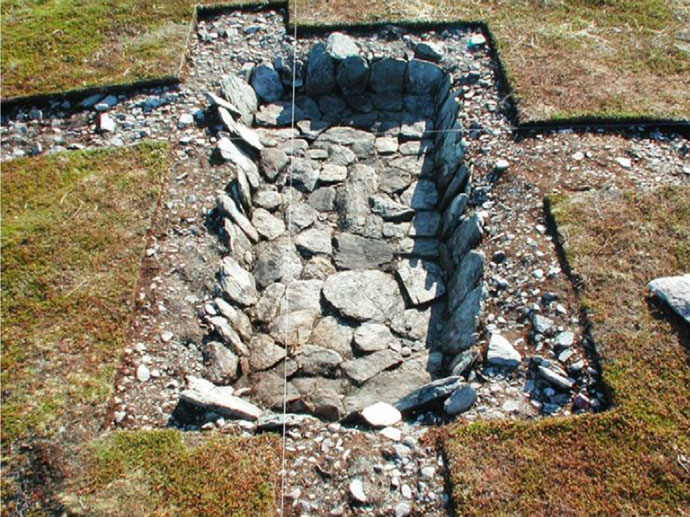About the project
Coastal regions in northern Arctic Norway harbour numerous distinct archaeological features known as slablined pits.
Over 700 slab-lined pits have been discovered and their primary geographical distribution is confined to the outer coastline of Finnmark and the northern part of Troms County. Radiocarbon dates obtained on charcoal from the base of these pits indicate that these features date between 0 and 1200 AD although the majority date to the Late Iron Age between 600 and 900 AD. While slab-lined pits were initially interpreted as graves or turf houses, isotype analyses on cemented organic residues within the pit sediments provide conclusive evidence for the melting of blubber and oil from seal or whale.

Photo: B. Olsen, University of Tromsø.
The abundant number of pits (which could be re-used multiple times) with their extended geographical distribution suggest a widespread exploitation of marine mammals for oil production for heating, lighting and myriad other uses
In this study, we investigate the potential of sedimentary ancient DNA (sedaDNA) to identify what species were exploited for oil production in slab-lined pits in northern Norway.
The extended geographical and spatial range of these pits provide a unique opportunity to understand early, pre-Viking Age human impacts in the high Arctic, which is an excellent subject for a larger competitive funding application.
Financing
This project is funded by the Nansenfondet (UNIFOR)
Cooperation
This highly multidisciplinary project between the archaeological and biological sciences has emerged from a new collaboration between PI and national researchers.
The expertise of the research team and state-of-the-art laboratory resources including the ancient DNA facilities and the Norwegian Sequencing Centre (NSC) at the UiO, as well as the archaeological insights from the UiT provide an excellent environment for this project.
Period
04.04.2018 - 31.07.2019